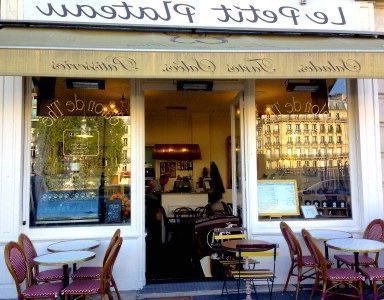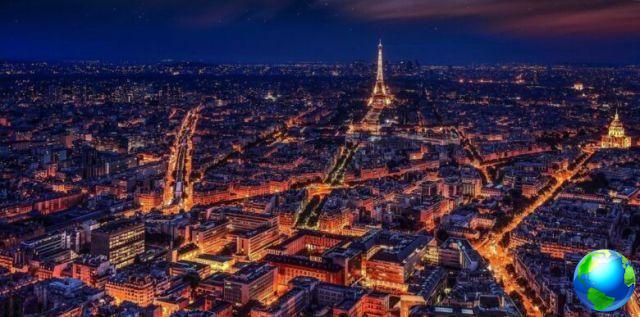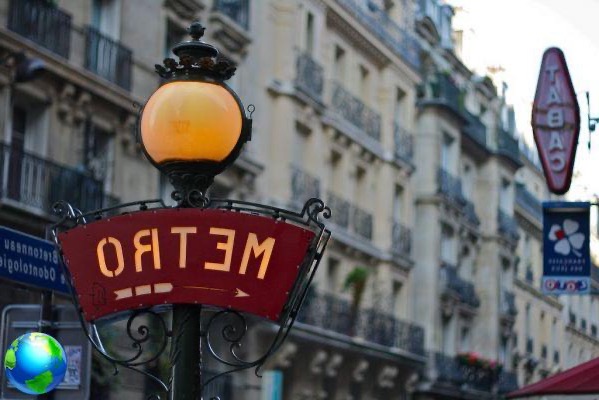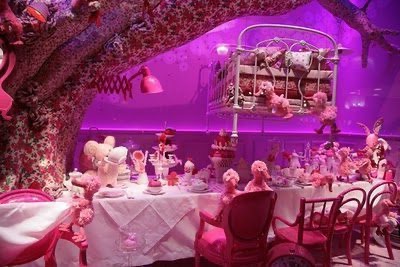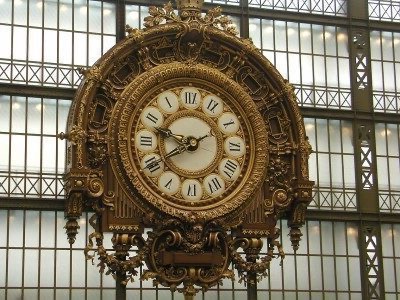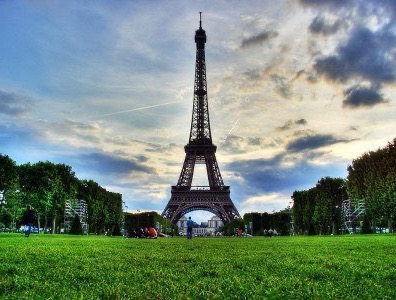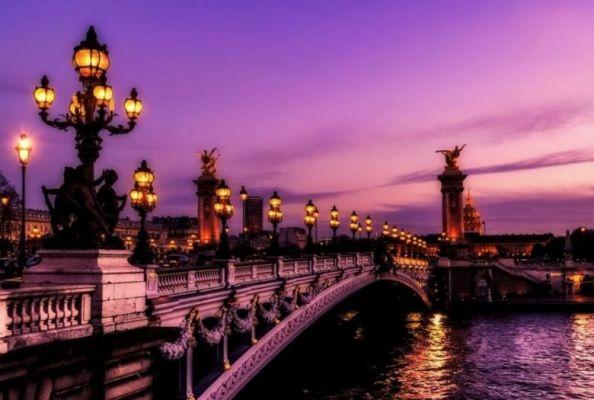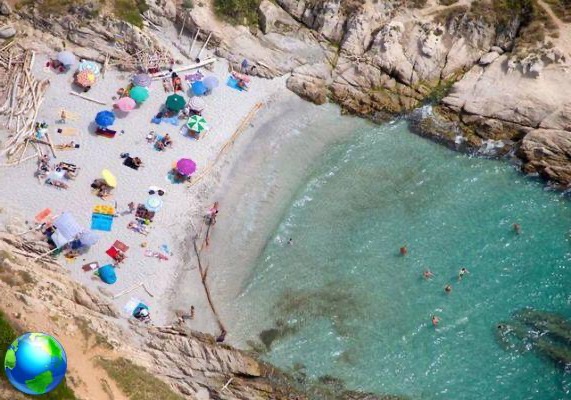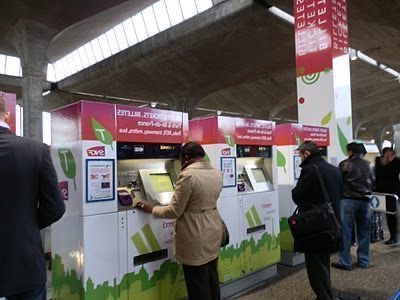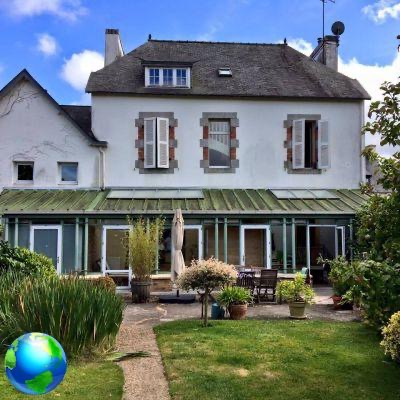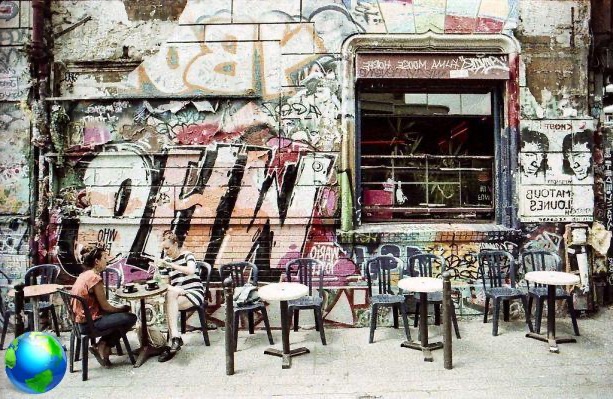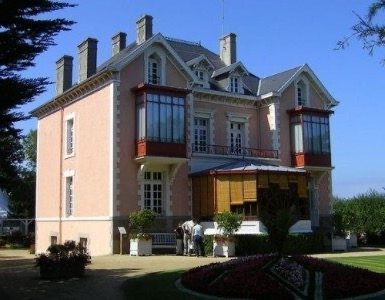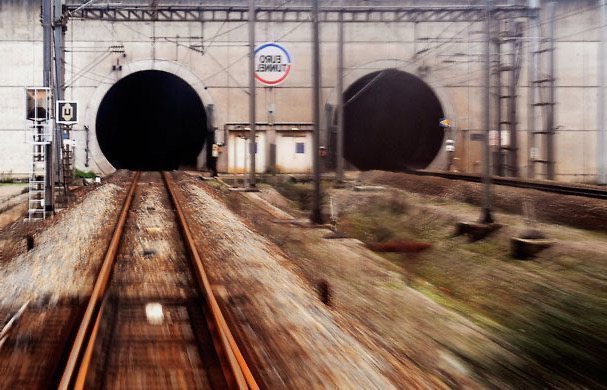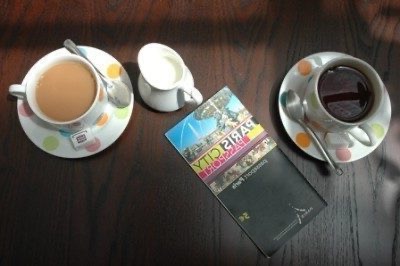Paris, one of the most romantic cities in the world, poetic, multifaceted and always on the move. I have been coming here since the dawn of time, indeed, if my memory serves me right, I think I took a plane for the first time just to come here, when I was 9 or 10 years old. Since then I have been back countless times, for a weekend or for months, because it is a city that never tires. There are always new things to do and see, it is a city at the forefront in many areas and this aspect is perhaps the reason why I love it the most. There are so many monuments and attractions to see, but, as my brother (who lived there for 10 years) says, the beauty of Paris lies rather in its views. They are the ones who make it truly unique! What to see in Paris if you go there for the first time time..it is a tough choice. The 4-day itinerary that I propose here is clearly based on my interests, but you can of course change it (especially as regards the museums, which are hundreds) according to yours. If you have more time, you can also dedicate yourself to discovering more unusual places; you can find them in my article on Unusual Paris: 10 places not to be missed.
They might also interest you:
- What to do in Paris with children
- Restaurants in Paris: 15 restaurants not to be missed
- Unusual Paris: 10 places to see
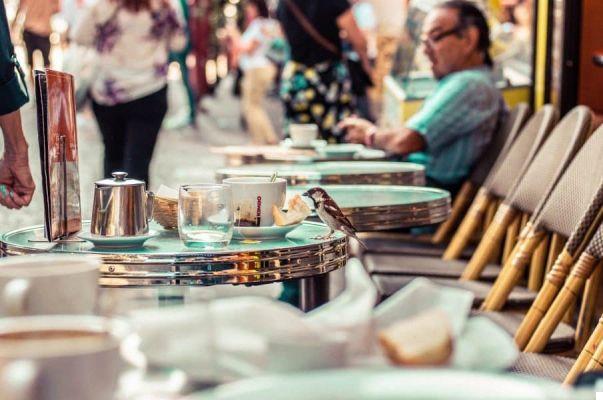
When to go to Paris
Here, after the sviolinata, comes the sore point: the climate! Like many other cities in northern Europe, the weather in Paris often changes abruptly. Winters can be very cold and it rains often and willingly. But this is what happened up to a few years. With climate change we can no longer predict anything but there is not a month in which to be completely "safe". Let's say that, considering my very personal statistics, the best months are June / July and October. With the Christmas lights it is beautiful, but the cold (often associated with the wind) can be really biting.
How to get to the center of Paris from the airports
On this point, I refer you directly to this page which is on the official website of the Tourist Board where you will find all the updated information on timetables and methods for reach the center of Paris from Orly and Roissy-Charles des Gaulle airports.
Where to sleep in Paris: the best areas
So, before recommending where to sleep in Paris, I would like to tell you that in Paris spaces (and rooms) can be really limited. The one-room apartment at the Pozzetto that seems microscopic to us can be considered a palace in Paris! So when you book, pay close attention to the size of the rooms (it is usually indicated, at least on Booking.com) and read the reviews because you can get incredible hovels. Obviously in Paris you can find everything, from the dump to the 5-star luxury, but the prices are on average high, especially for sleeping in the most central areas. My advice is to move a little from the center, both to spend less, and to find nicer structures. Here are some of them:
- Off Paris Seine : let's start with a very special hotel, perfect if you are going to Paris for a special occasion. The Off Paris is the first floating hotel in the city, it is a 4-star hotel located near the Jardine des Plants and the rooms have super views (see photo below).
- Mama Shelter: this hotel is part of a chain that I love very much and that I have used several times in various cities. They are all very trendy design hotels, with beautiful common areas. This is located in Bagnolet, in a nice residential area to the north east.
- Edgard Hotel: Edgard is also a nice design hotel and is very central, being close to the Grand Boulevard and the Pompidou Center. If you want to stay downtown..it is a great option.
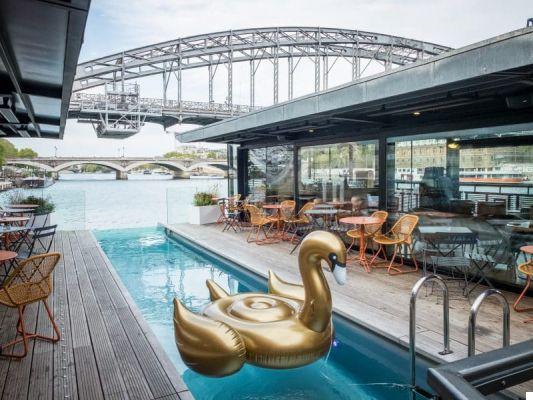
What to see in Paris in 4 days
As I have advised you to do in many other cities, especially when you go there for the first time, even for Paris I recommend that you take part in a 2h free tour (in Spanish) to get a first "smattering" of the city. The tour starts from the Hotel de Ville and allows you to discover some of the most important places and monuments of Paris (Nôtre Dame, the Sainte-Chapelle, the Conciergerie, the Pont Neuf, the Pont des Arts, the Louvre Museum, the Arc de Triomphe and the Opera), delving into the history of the city. This will allow you to better orient yourself in the following days and better understand what you are going to visit.
Paris Museum Pass: if you decide to follow the itinerary I propose (but I think it is worth more or less regardless), you should consider purchasing the Paris Museum Pass for 2 or 4 days (at a cost of 52 and 66 euros respectively). This pass then gives you "free" access to more than 50 museums / monuments in Paris and the surrounding area, including the Louvre, the Arc de Triomphe, the Sainte-Chapelle, the Musée Rodin, Versailles, and many others you can find here , with a considerable economic saving.
NB many museums in Paris have free admission on the first Sunday of each month.
Day 1: Latin Quarter, Notre-Dame, Les Halles
Latin neighborhood
To immediately enter the Parisian mood, I suggest you start exploring the city from one of the most typical neighborhoods, the Latin neighborhood, university district par excellence. Get off at the Place Monge or Censier-Daubenton metro station (line 7, pink) and go to Rue Mouffetard, where one of the most characteristic markets is located. Here you will be surrounded by patisserie, fromageries and every good thing that is edible. From there move to the Pantheon, where many famous people such as Victor Hugo, Emile Zola and Marie-Curie are buried… just to name a few. Further ahead you will then encounter i Jardin du Luxemburg, a beautiful park where Parisians take refuge in any climatic condition; there are those who jog, those who read, those who do tai chi .. a true slice of Parisian life! Then cross Boulevard Saint-Germain and throw yourself into the most characteristic alleys of this district, such as Rue Saint-André des Arts or Rue Saint Sèverin, to reach the Lungosenna. Here a stop at the library Shakespeare & Company it is a must! This historic bookshop became, in the 20s, the meeting place for writers such as Ezra Pound, Ernest Hemingway and James Joyce (Ulysses was printed right here!).
Ile de la Cité and Cattedrale di Notre-Dame
From Shakespeare & Co. you just have to cross the bridge over the Seine to find yourself onIle de la Cité, the island of the first settlement of Paris, as well as the center of the Roman city of Lutetia. In front of you you will have the imposing Notre-Dame de Paris Cathedral, unfortunately battered by the terrible fire of 2019 that caused the roof to collapse. Unfortunately now you will not be able to see almost anything, but I am sure that with the renovation it will be more beautiful than ever! The Ile de la Cité is also home to the Concierge (born as a royal palace, but used as a prison) and the Courthouse. Inside the walls of the latter is the Gothic masterpiece of the Holy Chapel. It was built at the behest of Louis IX as a palatine chapel of the medieval palace of the kings of France to house the Crown of Thorns, a fragment of the True Cross and several other relics of the Passion, and you will be speechless in front of the marvelous stained glass windows. To visit the Sainte Chapelle there are often quite long queues, but you can avoid them by buying the skip-the-line ticket first.


Saint-Louis Island and Marais
Crossing Pont Saint-Louis, you will then find yourself on the islet of the same name, a place that I love very much in Paris because it is truly an oasis of peace, with narrow streets, beautiful buildings and a few restaurants. From there then, walking on the Pont Marie you will reach the Marais. The district revolves around the beautiful Place des Vosges, the oldest square in Paris, inaugurated in 1612. Both the square and the streets around it have become one of the most desirable residential areas in Paris; the Marais is also the hub of the gay community and has always been home to the Jewish community. The latter is located in an area called Pletzl, which starts on Rue de Roisiers and then continues to Rue de Temple. For lunch, stop at Schwart's Deli for a great pastrami sandwich or at Breizh Cafe for the best Breton crepes in town. The Marais is a beautiful place to stroll, among designer shops, streetwear, clubs, trendy bars and restaurants, and is a very popular area even in the evening. If you are interested, the Marais also has the Picasso Museum and Carnavalet Museum (a gigantic museum dedicated to the history of Paris, housed in a very beautiful building and with pieces of incredible value).
Les Halles and Center Pompidou
From the Marais then head towards Les Halles, the area that takes its name from the main wholesale food market in the city, which was located here from the late 1100s to the 70s. The market was then relocated and in its place a large shopping center was born, the Forum des Halles, which has changed its face several times, the last one just a few years ago. This large public space is always full of people, it also hosts a garden and, above all, the Church of Sant'Eustachio, one of the most beautiful in Paris, in the Gothic style. A few steps away there is the Centre Pompidou, born from the will of President Pompidou, who wanted to create a cultural institution in the name of multidisciplinarity, entirely dedicated to modern art. The building was designed by Renzo Piano, Franchini and Rogers and was absolutely groundbreaking for the time. If you have time, visit at least the permanent collection (on the 4th and 5th floors) and go up to the top for a nice view over the city.


Royal Palace and Place Vendome
Then walk along Rue de Rivoli to reach the Royal Palace, the Royal Palace built by Richelieu where Louis XIV resided for a period. Today it is occupied by the State Council but you can enter the main courtyard which, since 1986, has housed the controversial work of Daniel Buren entitled Deux Plateaux, better known as The Columns of Buren (columns of various heights in black and white stripes). Here you will also see the Comédie Francaise building, the oldest national theater in the world, founded in 1680. There is also a free tour with guide in Spanish where you can discover the scandals and the glamor of Palais Royal and some of the covered passages most beautiful in the city. Continuing on Rue de Rivoli, you will see on the right Place Vendôme, synonymous with luxury and jewelry. This beautiful octagonal square is overlooked by some of the most elegant shops in the city and the very luxurious (and famous) Hotel Ritz Paris (the one where Lady D was staying before the accident).
Cruise on the Seine with dinner
The perfect way to end this first Parisian day in style is undoubtedly to observe the lights that light up on the city, while enjoying a dinner on board a panoramic boat. Let's talk about the famous ones Bateaux Mouches, the boats that sail on the Seine, which have a panoramic terrace and large windows in the restaurant from which admire the Eiffel Tower, Notre-Dame, the Louvre, etc. On the surface they might look like tourist traps but trust me they are not. I have done it many times (in recent years often just the Christmas lunch or dinner) and it is one of the most beautiful and romantic experiences you can have in Paris. Even the food I must say has always lived up to it. Find all the info and the link to book on this site.


Day 2: Tour Eiffel, Musée d'Orsay, Champs-Èlisées
Eiffel Tower
Of course, among the things to see in Paris, you cannot miss her! Today the Eiffel Tower it is the symbol of Paris in the world, but this incredible steel monument was initially opposed by Parisians. Built by Eiffel for the 1889 Universal Exposition, you don't realize its size until you go under it. The Eiffel Tower is 280 meters high and 3 levels are open to the public. The first level is accessed on foot, via a staircase, the second one can choose between a staircase or a lift and the third only with a lift (this is closed in strong wind conditions). Inside there are also restaurants 2 (at 1st and 2nd level) and a bar a champagne on the top. Going up to the 3rd level costs a lot (almost 30 euros), but in my opinion at least once .. it has to be done! The view from the top is something incredible !! Reservation is practically mandatory (unless you want to queue for hours) and you can do it through the official website. Nice views of the Eiffel Tower are also available Trocadero gardens (located on the other side of the Seine) and taking a river cruise.
Rodin Museum
With a half hour walk, you will pass in front of theHotel invalid (where the Royal Chapel with Napoleon's tomb is located) to reach one of my favorite museums in Paris, the Rodin Museum. This museum is located in theHotel Biron, a Rococo-style palace with a magnificent garden, and houses many sculptures by the artist (including the famous Kiss and The Thinker) and his partner Camille Claudel. Rodin lived here between 1908 and 1917 and left all the works he owned to the French state, leaving them in the building for the purpose of creating a museum. In the 900s, many other artists lived in this museum including: Jean Cocteau, Henri Matisse and Isadora Duncan. The set up is magnificent and the gardens are very relaxing. To avoid the queues, even here you should buy the ticket first through the official website.


D'Orsay Museum
From the Rodin Museum you pass to one of the most visited museums in the world: the D'Orsay Museum. The museum takes its name from the former railway station in which it is located, the Gare d'Orsay, built in an eclectic style at the end of the 800th century. The D'Orsay Museum is famous because it exhibits so many masterpieces of impressionism and post-impressionism by artists such as Monet, Renoir, Degas, Van Gogh, Cézanne, Matisse and many others. The set-up is also particularly beautiful and scenographic and was curated by the very Italian Gae Aulenti. You can stay for hours to admire these paintings! Being a must for anyone visiting Paris, even in this case it is essential to buy the skip-the-line ticket first.
Other valid alternatives to the two museums I have proposed to you are the Palais de Tokyo (if you are interested in contemporary art), the Marmottan-Monet Museum (for Monet fans, here you will find the vast collection of his works in the world), Quai Branly Museum (a beautiful museum of anthropology) or the Pierre Bergé-Ives Saint Laurent Foundation (museum dedicated to the creations of the great French designer).
Arc de Triomphe and Champs Èlises
Leaving the D'Orsay Museum, you reach one of the most beautiful bridges in Paris, the Alexander III Bridge, to cross the Seine and arrive on the Champs Èlisées, the most famous of the 12 Grand Boulevard that radiate from Place de l'Etoile (or Place Charles de Gaulle). The Champs Èlisées are the symbol of French grandeur and luxury and end in front of theArc de Triomphe. This monumental arch was commissioned by Napoleon to celebrate his victories and it is possible to climb on his panoramic terrace to have a nice view over the square that ranges up to La Defense (where La Grand Arche is located, built on the same axis). Skip-the-line tickets can also be purchased for the Arc de Triomphe.
Bastille dinner and / or Crazy Horse show
For your second Parisian evening I propose a dinner (and possibly also an evening, if you are not overcooked) in Bastille area (in my article on Paris Restaurants you will find several proposals) or, a beautiful burlesque show in the temple of this art: the very famous Crazy Horse. I have dreamed of it for years, I tried to organize it at least a couple of times, but I don't give up!


Day 3: Louvre, Montmartre, Pigalle
Louvre
The third day starts from one of the most beautiful and famous museums in the world, the Louvre, first for the number of visitors. The Museum takes the name of the building that houses it, which was born as a fortress at the end of 1100 and was then modified over the years. In fact it was the seat of the French monarchy until 1682, when Louis XIV moved to the Palace of Versailles. It became a national museum in 1793 thanks to the revolutionary government and the works (380.000 pieces!) Have been collected by French governments over the centuries. With these premises you understand well that you can stay in it for months! The sections and collections are many (ancient art, Italian school, French school, Flemish school and many others) so you will necessarily have to select what interests you the most. Among the most famous works, apart the Mona Lisa by Leonardo da Vinci, the code of Hammurabi, the Venus de Milo, the Venus of Samothrace, the dying slave of Michelangelo and many paintings by Raphael, Titian and Botticelli. Personally… I love the collection of ancient art (especially the Egyptian and Babylonian ones) very much, but it is a really beautiful museum, where everyone can find works of their interest. The main access to the museum is the Hall Napoléon under the pyramid, where the ticket offices and the entrances to the three wings of the museum are located, but the skip-the-line ticket reservation here it really is a must and you can buy it here.


Montmartre and the Sacred Heart
From the Louvre, after a hearty lunch to regain your strength, get on the metro to reach Montmartre. The closest stop of all is Abbess on line 12, green, but there are also others nearby that are fine (Pigalle, Blanche, Anvers). Practically in front of the metro exit you will see the Mur des Je T'aime, a blue majolica wall with many phrases that are then the translation into many languages of "I love you" .. a classic photographic set for couples. From here you can then walk up to the Sacred Heart Basilica, crossing alleys and stairways, or take the funicular from Place Saint Pierre. Montmartre is the artists' district par excellence in Paris and represents the bohemian life that Toulouse-Lautrec and others painted in the late 900s. Today again Place du tertre, the main square, is full of artists and painters ready to take portraits. Despite being one of the most touristy and over-inflated places in Paris, if you break away from the main streets you can still see something authentic. The view that can be enjoyed from Montmartre, or from the square in front of the Sacred Heart Basilica or, even better, from the dome of the Basilica, it is one of the most spectacular in Paris.
Pigalle
Coming down from Montmartre you cannot miss a visit Pigalle, what was the red light district of Paris, where is the famous Moulin Rouge, where they do can-can shows (for tickets you can find the info here). I remember very well that years ago, like 15 years ago, Pigalle was a neighborhood where you didn't come, and if you did ... you only did it during the day and you had to be very careful. In recent years, however, there is a real transformation of the neighborhood that is becoming more and more fashionable, with organic shops, ateliers and sophisticated clubs. The sex shops are still there but they are concentrated in Place Pigalle and in the main avenue. South of the Boulevard de Clichy there are beautiful neoclassical buildings of the '900, which give the area the appellation of'New Athens'. Among the places in Pigalle that have become particularly famous (and especially photographed!) Is the Playground Duperré, a basketball court located on Rue Duperreé, exactly in this spot. Set between 2 old buildings, this field was initially created in 2009 with geometric patterns in primary colors (yellow, red, blue, plus white). The new design, signed by ILL-Studio and the fashion brand Pigalle (with the support of Nike), has instead transformed it by painting it in petrol blue, fuchsia and orange.
For the evening I would tell you to opt for a nice restaurant in shingles Good News (like the Poulette for example), Marais or for a historic restaurant in the Hotel de Ville area such as Le Trumilou.



Day 4: Vuitton Foundation, Palace of Versailles or Giverny
Luis Vuitton Foundation
For the fourth day discovering Paris I propose 3 different options. The first concerns one of the most recent museums in the city, inaugurated only in 2014 but entered straight into my favorites, namely the Luis Vuitton Foundation. To reach it you have to get off at the Pont de Neuilly metro stop (on the yellow line 1) and walk for about twenty minutes, or take an Uber or a taxi. The Foundation is located in one of the 2 large Parisian parks, the Bois de Boulogne, and was designed by the architect Frank Gehry (the same of the Guggenheim in Bilbao and the Disney Hall in Los Angeles). The architectural style is Gehry's “classic” one which I find simply sublime. Beyond the architectural value, in my opinion it is absolutely worth seeing this museum because the quality of the impromptu exhibitions held there is always very high. Book your ticket here too, especially if you go there on the weekend.

Palace of Versailles
As a great lover of European royal palaces, I could not fail to include the Palace of Versailles among the things to see in Paris. Versailles is located 17 km from the center of Paris, and can be reached in about 30/40 minutes by RER from the center of Paris. The site, which includes the Royal Palace and the immense gardens, is really vast and would require at least a full day, but if you have little time available you can optimize it by participating in a half-day guided tour from Paris, like this one, where you can see all of them. the main things (and you won't have to queue at the entrance). Versailles is the palace par excellence in the world and it was built precisely as a place of ostentation of the sovereign's wealth. The palace was born at the behest of the young Louis XIV to get away from the capital and its citizens, and it hosted the court of France from 1682 to 1789, when the crowd dragged Louis XVI and Marie Antoinette to Paris where they were guillotined. The figures are impressive to say the least: 700 rooms, 67 stairways, 6300 paintings, 5000 furniture, an immense castle designed to house a court of 6000 people and flaunt the wealth and power of the French monarchy. One of the most evocative rooms of the palace is the gallery of mirrors, which shines in the light reflected from its many mirrors and in the beauty of its stuccos and paintings.


Giverny and Monet's house-museum
I close this article on things to see in Paris in 4 days with another beautiful trip outside the city, the one a Giverny, where is the Claude Monet's house-museum. Giverny is located in Normandy, 72km northwest of Paris, on the right bank of the Seine. Claude Monet decided to move here with his family in 1883 to practice his two passions, botany and painting, and lived there until his death in 1926. The painter's property is divided into 2 parts: the first is called Clos Normand and includes the famous pink and pastel green house and theAtelier of the Water Lilies, and the other is the Water garden, the fantastic aquatic garden crossed by a Japanese bridge, which is immortalized in the famous Nymphéas series. From Paris there are half-day organized tours (here you will find all the info).

Health insurance is recommended
Being in Europe, as Spanish citizens we have the right to health care, but there are specific conditions and ceilings. My advice is to still take a classic medical-luggage insurance that can cover you during the trip, even for Covid-19. I am very happy with many insurance companies, a site that compares the policies of different companies and proposes the most convenient policy for that particular trip. To do this you will have to enter the data relating to your trip and they will send you an email with the best proposal that you can then buy directly online (!!!). All travel insurances also cover medical assistance in the event of a coronavirus infection, including testing if necessary. There is also coverage for the extension of the stay in the hotel due to the quarantine. Likewise, the trip cancellation guarantee includes coverage for illness or death of the traveler or a family member due to COVID-19.
- The Via Francigena del Sud: on the way from Rome to Puglia
- New Year's Eve in European capitals: where to go?
- December in the heat: 12 dream holidays for Christmas and New Year
- What to see in Athens: all the places not to be missed
- Budapest: what to see in 3 days




